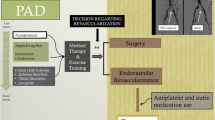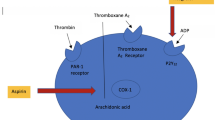Acute peripheral arterial occlusion occurs as a result of thrombosis or embolism. A reduction in the prevalence of rheumatic heart disease accounts for a shift in the frequency of embolic to thrombotic occlusions. Also, a dramatic increase in the number of lower extremity arterial bypass graft procedures explains the predominance of graft occlusions in most recent series of patients with acute limb ischemia. While open surgical procedures remain the gold standard in the treatment of peripheral arterial occlusion, thrombolytic agents have been employed as an alternative to primary surgical revascularization in patients with acute limb ischemia. Systemic administration of thrombolytic agents, while effective for small coronary artery clots, fails to achieve dissolution of the large peripheral arterial thrombi. Catheter-directed administration of the agents directly into the occlusive thrombus is the only means of effecting early recanalization. Prior to 1999, urokinase was the sole agent used in North America for peripheral arterial indications, but the loss of the agent from the marketplace forced clinicians to turn to alternate agents, specifically alteplase and reteplase. Interest in the use of platelet glycoprotein inhibitors and mechanical thrombectomy devices also rose, coincident with the loss of urokinase from the marketplace. Most clinicians welcome the predicted return of urokinase to the marketplace. New investigative trials should be organized and executed to answer some of the remaining questions related to thrombolytic treatment of peripheral arterial disease. Foremost in this regard remains the question of which patients are best treated with percutaneous thrombolytic techniques and which are best treated with primary operative intervention. Ultimately, however, the thrombolytic agents are but one tool in the armamentarium of the vascular practitioner. This review is directed at providing the practicing clinician with the basic fund of knowledge necessary when determining the most appropriate intervention in a particular patient with peripheral arterial occlusion, be it thrombolytic therapy, percutaneous mechanical thrombectomy, primary surgical revascularization, or a combination of the three.
Similar content being viewed by others
Author information
Authors and Affiliations
About this article
Cite this article
Ouriel, K. Current Status of Thrombolysis for Peripheral Arterial Occlusive Disease . Ann Vasc Surg 16, 797–804 (2002). https://doi.org/10.1007/s10016-001-0318-y
Issue Date:
DOI: https://doi.org/10.1007/s10016-001-0318-y




